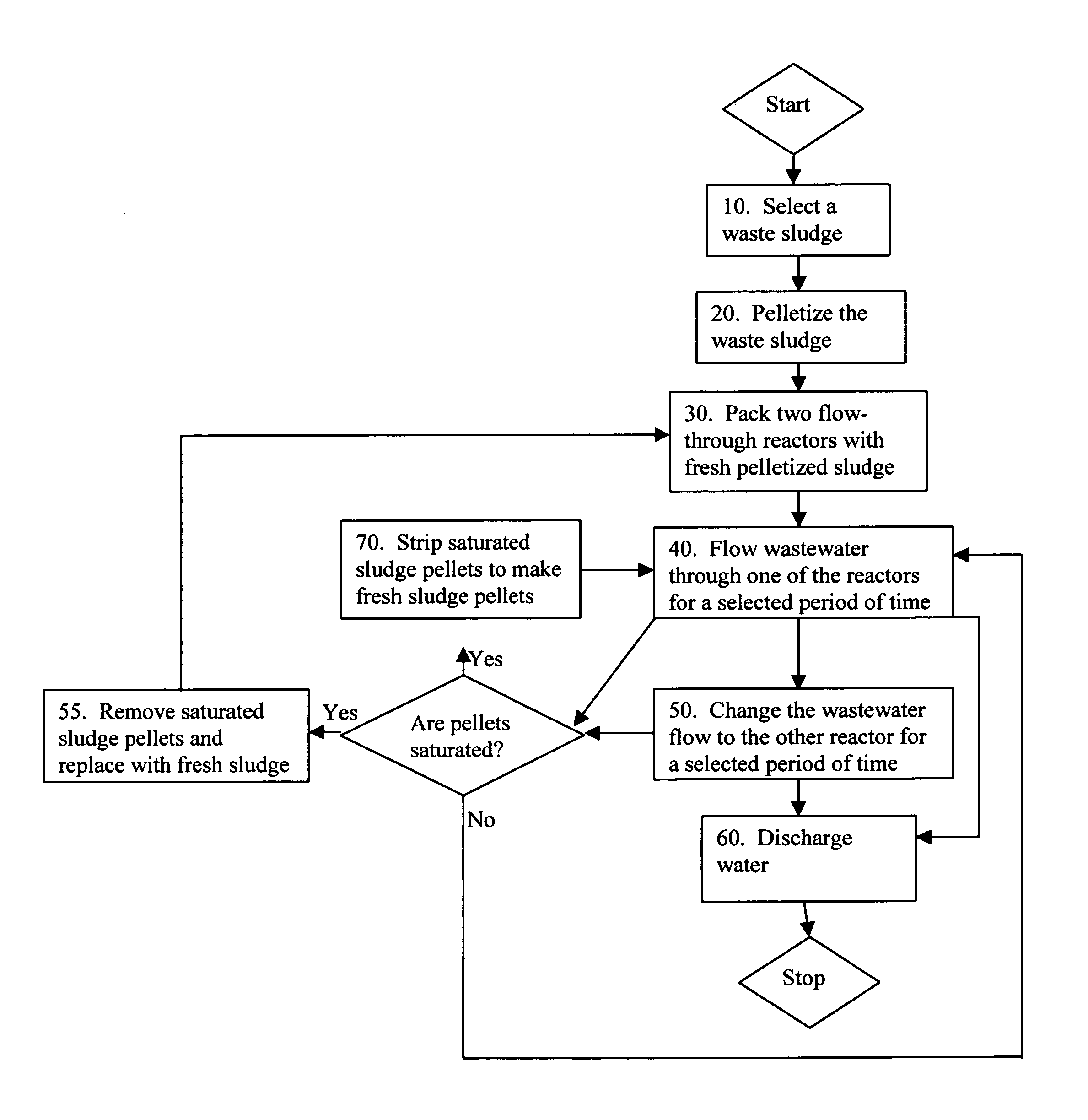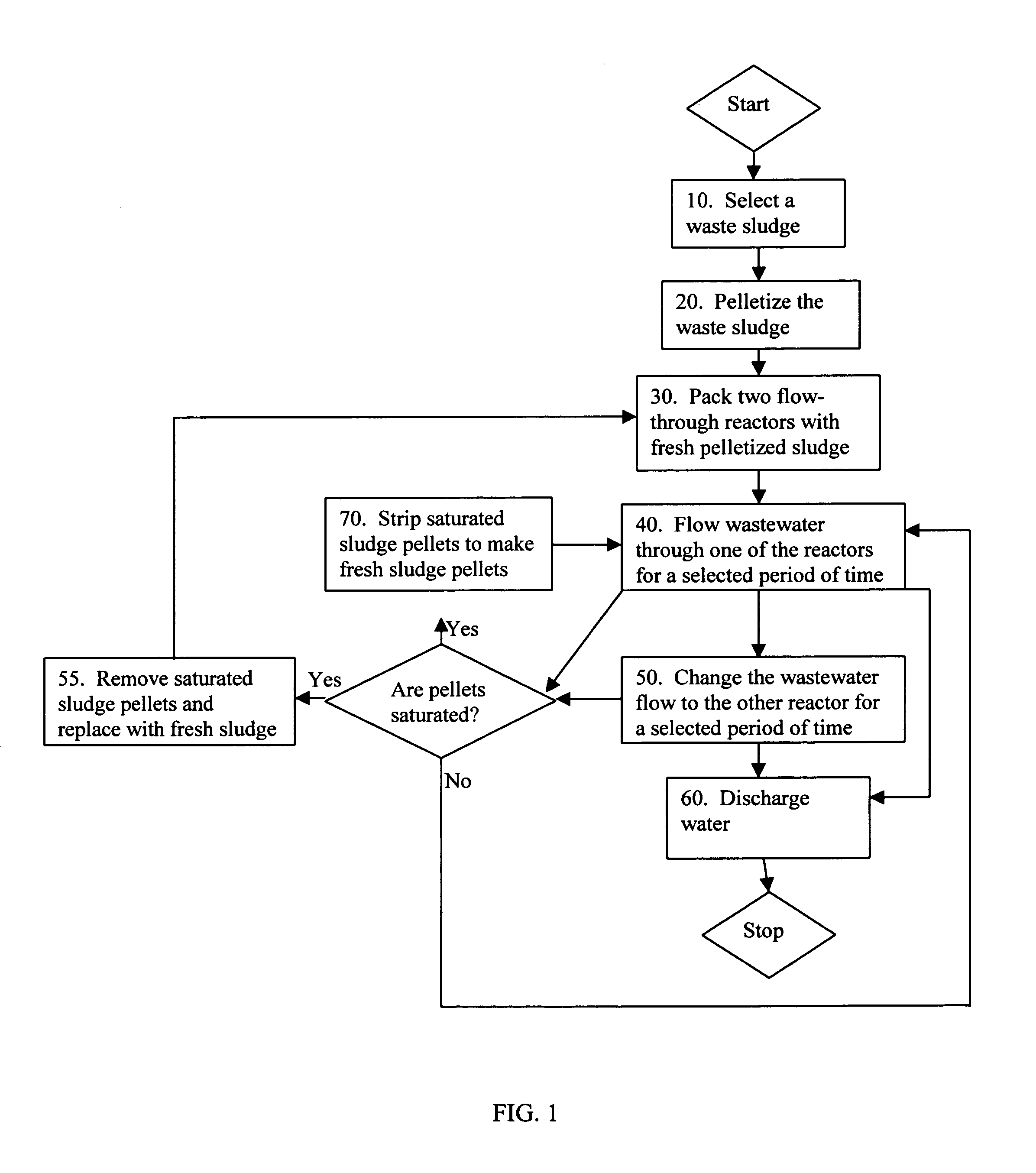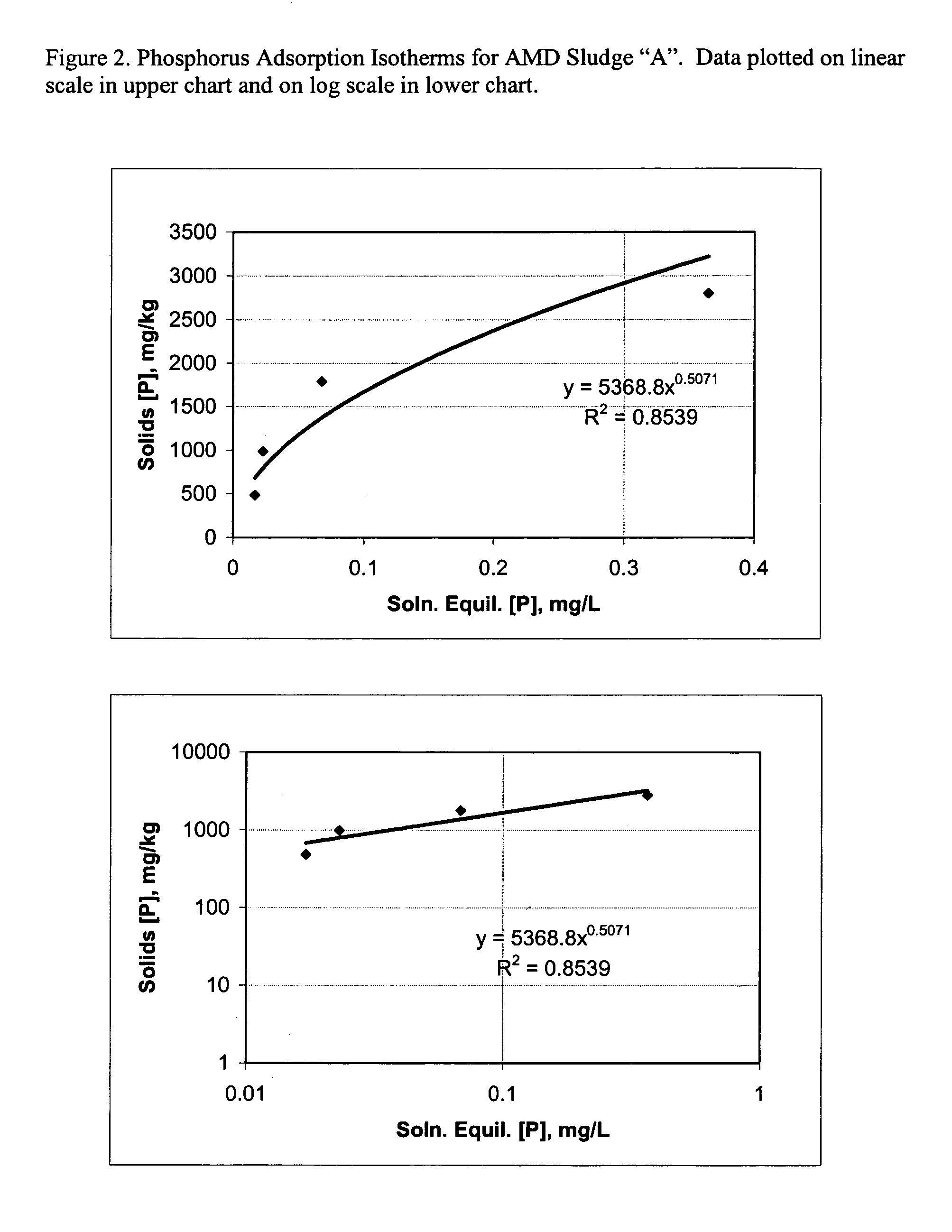Method of removing phosphorus from wastewater
a technology of wastewater and phosphorus, which is applied in water/sewage treatment by ion exchange, quaries waste water treatment, separation processes, etc., can solve the problems of no longer being able to remove more phosphorus from solution, sludge will become saturated with phosphorus, etc., and achieve the effect of reducing the overall phosphorus load
- Summary
- Abstract
- Description
- Claims
- Application Information
AI Technical Summary
Benefits of technology
Problems solved by technology
Method used
Image
Examples
example 1
[0049]A sample of sludge “A” was packed in a glass chromatography column with an internal diameter of 1.5 cm and a height of 50 cm. Dried sludge particles from source “A” were screened to 5×10 mesh size and 36.7 g sludge was added to the column. Water was pumped through the column in a downward direction at a rate of 15 ml / min, using a Masterflex peristaltic pump. The water was a synthetic wastewater composed of spring water from the Leetown Science. Center to which KH2PO4 had been added to give a total phosphorus concentration of 1 mg / L. Performance of such columns is typically quantified by the time and volume of solution treated before a specified fraction of absorbate is detected in the column effluent. Scale up is done on the basis of the cross sectional area of the column, so results are typically expressed as time before breakthrough at a given flow rate in gallons per minute per square foot of column area. Under the conditions specified above, the area-based flow rate was 2....
example 2
[0050]A similar test was conducted using a second sludge sample (hereinafter, sludge “B”). The same equipment, configuration, and flow used in EXAMPLE 1 above were employed. However, rather than the “pulsed” flow used in EXAMPLE 1, the water was flowed continuously through the packed column. Results are also shown in FIG. 5. Phosphorus removal was much less effective than in EXAMPLE 1. Although this could be due to the effect of different sludge type, results from the kinetic test discussed earlier indicated that sludge “B” still has a good affinity for phosphorus, and indicated that “resting” of the column in the first test provided superior performance.
example 3
[0051]AMD sludge pellets with a binder of 30% Portland cement were loaded into a pair of transparent plastic columns. Simulated wastewater was pumped through the column with a peristaltic pump. Flow was switched between columns on a 12-hour cycle. Results for this pelletized batch of AMD solids is shown in FIG. 6. Here, the columns treated a flow of 2.1 gpm / ft2 for over 30 days with a phosphorus recovery of 60% of the incoming P, again, at a very low initial concentration.
PUM
| Property | Measurement | Unit |
|---|---|---|
| diameter | aaaaa | aaaaa |
| time | aaaaa | aaaaa |
| time | aaaaa | aaaaa |
Abstract
Description
Claims
Application Information
 Login to View More
Login to View More - R&D
- Intellectual Property
- Life Sciences
- Materials
- Tech Scout
- Unparalleled Data Quality
- Higher Quality Content
- 60% Fewer Hallucinations
Browse by: Latest US Patents, China's latest patents, Technical Efficacy Thesaurus, Application Domain, Technology Topic, Popular Technical Reports.
© 2025 PatSnap. All rights reserved.Legal|Privacy policy|Modern Slavery Act Transparency Statement|Sitemap|About US| Contact US: help@patsnap.com



